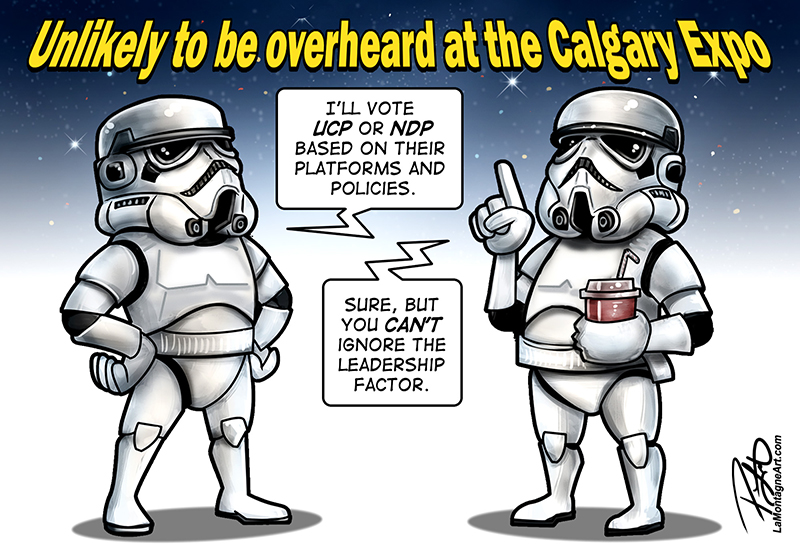
Here’s a time lapse drawing video of my little friend Berkley when she was a cub. You may listen to the voice-over or read it below.
Most artists will experience an inspirational drought where the creative well appears to have dried up, often several times in a career. Get to the bottom and start digging, you may only find more dry dirt.
That’s some scary shit, especially when hauling that water is how you make your living.
The pandemic was a wake-up call for many. Some changed careers because they had to. Others considered returning to their pre-lockdown jobs and realized they’d rather be unemployed.
We were all confronted with hard questions.
One I keep returning to is, “What do I want?”
The easy answer is often ‘more money’ as many imagine that would solve our problems. I don’t want a sports car, a big truck, or a huge house. I’m not a ‘buy more stuff’ guy. More money means safety and security, not having to fret about the finances, now or in my senior years.
Retirement doesn’t appeal to me. To keep my existential angst at bay, I need to have something to do. Idle time is not my friend. Barring any injury, illness or a cognitive decline, a prospect that honestly scares the hell out of me, I plan to work for the next twenty-five-plus years.
But what work do I want to do?
 Parents used to tell their children to get an education and have something to fall back on, but those safety jobs have become rare. The days of thirty or forty years with a company followed by a healthy pension are long gone. We read daily about massive layoffs from corporations with names that used to be synonymous with stability.
Parents used to tell their children to get an education and have something to fall back on, but those safety jobs have become rare. The days of thirty or forty years with a company followed by a healthy pension are long gone. We read daily about massive layoffs from corporations with names that used to be synonymous with stability.
That’s one reason I opted to sail my own ship rather than shovel coal on a larger vessel where the captain can throw you overboard on a whim, most likely into shark-infested waters during a hurricane.
But even working for yourself, you must still answer to customers. The art you want to create and the art your clients want you to create are often two different things.
At my market or gift show booth, people often ask for their favourite animal. Do you have an iguana, a hedgehog, or a kangaroo? If I don’t, I’ll add it to the list and might eventually paint it. If they follow my work, they might even still be around when I complete it. It could become a bestseller but likely won’t because most people want popular animals like lions, tigers, bears, and wolves.
At one event earlier this year, somebody asked if I had a sloth. I had just painted one, so I plucked it from the bin, put it in her hands and proudly said, “Why yes, I do.”
The woman looked at it briefly, put it back in the bin and started flipping through the others, asking, “Do you have a platypus?”
I wished I had so that I could find out what she’d ask for next. When I said I didn’t, she said, “Oh, too bad, I would have bought one,” and she walked away.
This is often what it’s like working for clients.
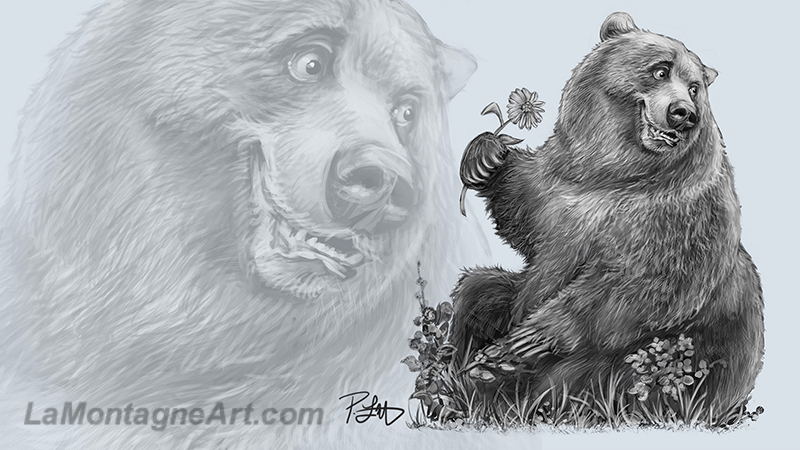 Several licensing companies rent the rights to put my work on their products. Occasionally, one will ask for a painting of a specific animal. If I can, I’ll try to accommodate the request. But without fail, as soon as I do, the client has a list of other images they want me to create.
Several licensing companies rent the rights to put my work on their products. Occasionally, one will ask for a painting of a specific animal. If I can, I’ll try to accommodate the request. But without fail, as soon as I do, the client has a list of other images they want me to create.
Suddenly, licensing my catalogue has turned into their ordering custom pieces, but without commission rates or guarantees that the time spent will generate revenue. It’s somebody else gambling with my money or, more importantly, my limited time.
I recently negotiated with a puzzle company to create a few designs for them. The first was a detailed painting of three giraffes. It was my idea, but one they approved. Shortly after I finished it, the owner told me they couldn’t add any new artists this year due to unforeseen circumstances. No big surprise in this economy.
I’m disappointed but have no hard feelings because I got some valuable experienced advice about what makes a good puzzle, and I stretched my skills to create something new. And I’m also happy with the finished piece. Once I complete a couple more puzzle-minded pieces, I’ll be shopping that first painting and new designs to other puzzle companies. Failing that, I’ll produce my own.
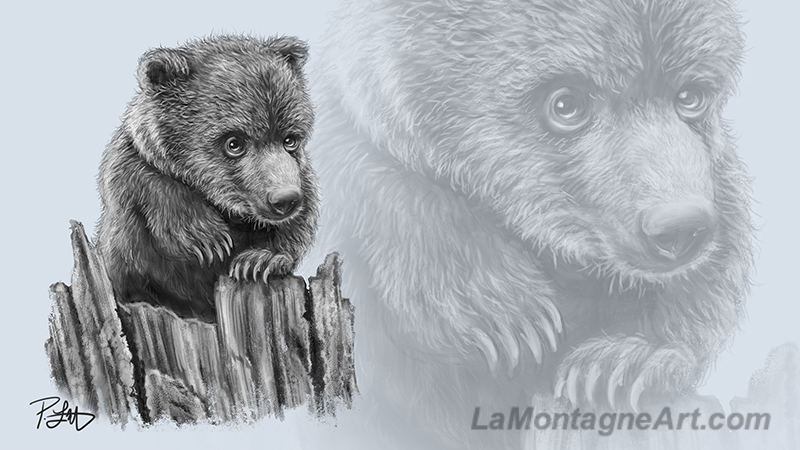 When companies are your clients, your needs are not their needs. If your art resonates with their customers, then it’s mutually beneficial. But the moment it doesn’t, you’re yesterday’s news. They’ll work with the artist who makes them the most money. They’re in business to promote their company, not your work.
When companies are your clients, your needs are not their needs. If your art resonates with their customers, then it’s mutually beneficial. But the moment it doesn’t, you’re yesterday’s news. They’ll work with the artist who makes them the most money. They’re in business to promote their company, not your work.
On the reverse of all my prints, there is an artist bio. The last line invites people to subscribe to A Wilder View on my website, a regular email where I share news, paintings, and the stories behind them. One retailer will only sell my prints if I remove that line from the bio, as they don’t want their customers going to my website.
I’ve had a website for over two decades, and I’m easy to find, so I’m not concerned. But I am reminded of my value every time I prepare to deliver new prints because I must slice off that last line from each bio before sticking it to the backer board.
I recently severed ties with an art licensing agency that kept asking me to create new work to follow whatever trend was popular this quarter, whether it was the type of work I did or not. It wasn’t personal; they wanted all their artists to do the same thing.
If you’re a graphic designer or illustrator, following trends is often part of the job and what you signed up for. But if you’ve found that rare jewel of an established niche as I have, changing what you do every few months because somebody read a post on Facebook that robot plumbers wearing figure skates are in this year, you might as well be panhandling. The artist takes all the risk, creating new work in the faint hope the licensing agency might find a buyer for it. If they don’t, too bad.
If you won’t do it, they can find thousands of young desperate artists who will.
That’s no way to sustain a career. Nobody wins a race to the bottom.
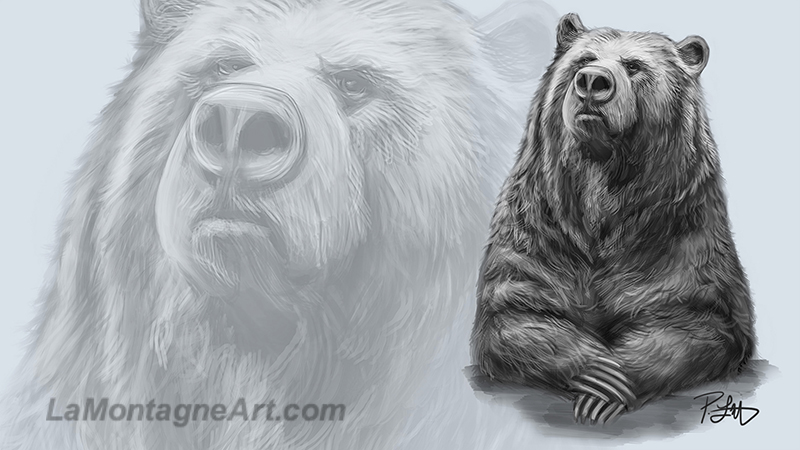 Customer service, professional behaviour and sound business practices are essential, as is compromise and accommodating your clients’ needs and wishes. People pay you to supply what they need, and delivering that often builds lasting relationships beneficial to both parties. All boats rise with the tide. Fail to realize these things, and you’ll soon be out of business.
Customer service, professional behaviour and sound business practices are essential, as is compromise and accommodating your clients’ needs and wishes. People pay you to supply what they need, and delivering that often builds lasting relationships beneficial to both parties. All boats rise with the tide. Fail to realize these things, and you’ll soon be out of business.
But if you don’t write your own story, you’re just a bit player in somebody else’s. When you spend all your creative energy trying to please your clients and customers at the expense of the things that made you want to be an artist in the first place, you become bitter and resentful.
At least I have. But I’m working through it by redefining my boundaries in work and life.
An old maxim cautions, “Don’t kill yourself working for an employer that would advertise your job before anybody sees your obituary.”
If I suddenly dropped dead, my licensing clients would (hopefully) send my royalties as usual and negotiate any future licensing with my wife. Everybody else would move on.
Newspapers continue to struggle, and the question of how long I’ll be an editorial cartoonist has been front and center for over a decade.
These are things I can’t control.
So I ask again, “What do I want?”
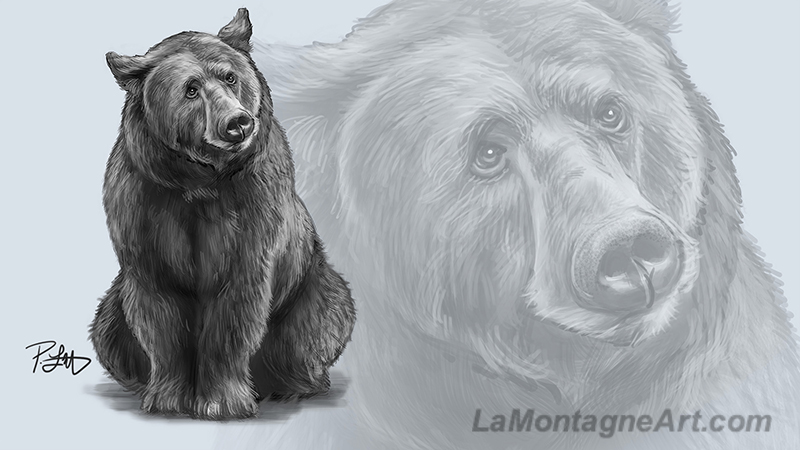 I enjoy creating my animal art, but lately, whenever I go to paint something, I think, “Will this animal be popular? Have I painted too many of these? Not enough? Will this make me any money?”
I enjoy creating my animal art, but lately, whenever I go to paint something, I think, “Will this animal be popular? Have I painted too many of these? Not enough? Will this make me any money?”
Every art decision has become about revenue. And when money is the prime motivator, the creative light dims. That leads to burnout and no joy left in the work. When the economy is down, costs are up, interest rates rising, and companies are laying people off, it’s hard to invest time in projects that might bear fruit later when other short-term work is more likely to generate income now.
Payments from clients and licensing companies are taking increasingly longer to reach my mailbox, despite their tight deadlines and demands for quick delivery.
Below the surface of every current piece of art is an undercurrent of desperation. Doom and gloom valley is not the preferred habitat for happy-looking animals.
Picasso said, “Inspiration exists, but it has to find you working.”
But then he also said, “The people who make art their business are mostly imposters.”
I’m gonna focus on the first quote and conveniently ignore the second one.
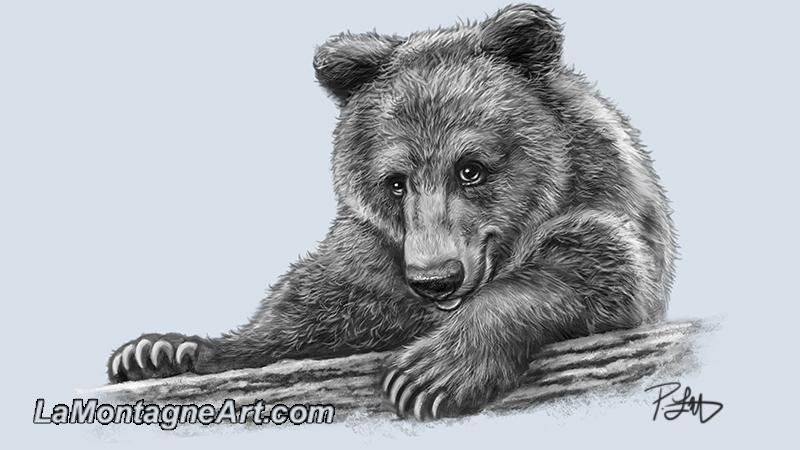 So while I’m trying to answer the question of what I want to do, I’m working on my art book about bears. Not promising to work on it like I’ve been doing for more than six years, but working on it, as I’m well and truly sick and tired of my own procrastination and bullshit excuses.
So while I’m trying to answer the question of what I want to do, I’m working on my art book about bears. Not promising to work on it like I’ve been doing for more than six years, but working on it, as I’m well and truly sick and tired of my own procrastination and bullshit excuses.
A very patient publisher recently told me to write the kind of art book I like to buy and read. The art books I like have smaller drawings, sketches, and unfinished pieces among the fully rendered paintings.
So, I’ve been alternating between writing the bear stories and drawing accent pieces like the ones you see here. I enjoy drawing them and expect one or two will inspire future paintings, as sketches often do.
While working on these images, I realized that whenever I’m lost and trying to navigate this ridiculous profession of art for a living, I always seem to come back to bears.

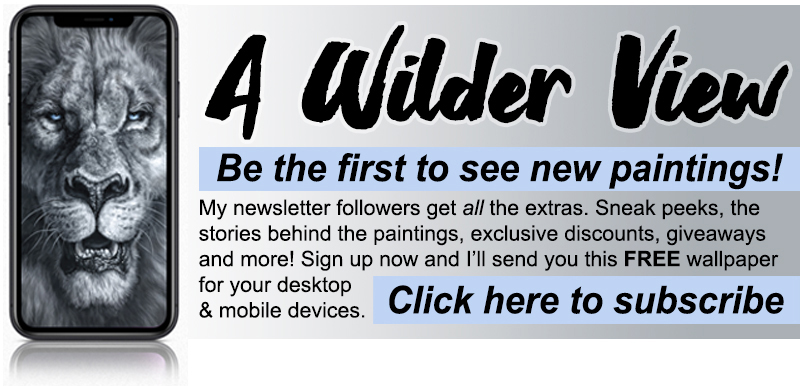

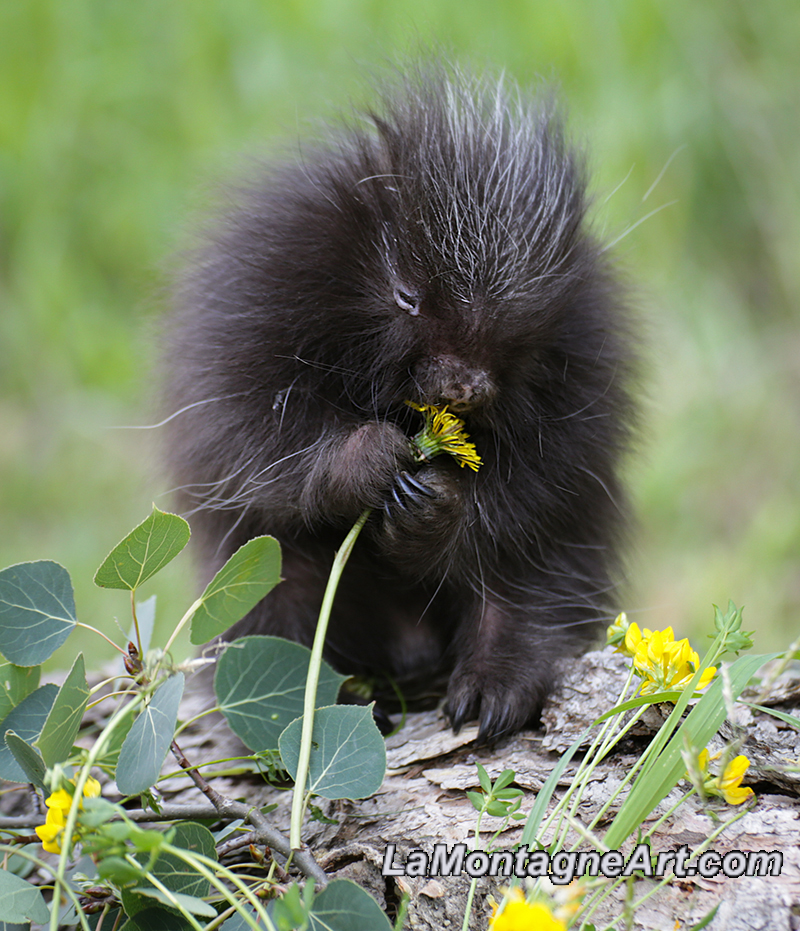 Velcro’s Mom was a road casualty, and they suspect he might have been attached to her when it happened. When surrendered to the park, his eyes were scabbed over, and his nose and muzzle abraded. His nose is still healing, but he’s coming along nicely.
Velcro’s Mom was a road casualty, and they suspect he might have been attached to her when it happened. When surrendered to the park, his eyes were scabbed over, and his nose and muzzle abraded. His nose is still healing, but he’s coming along nicely.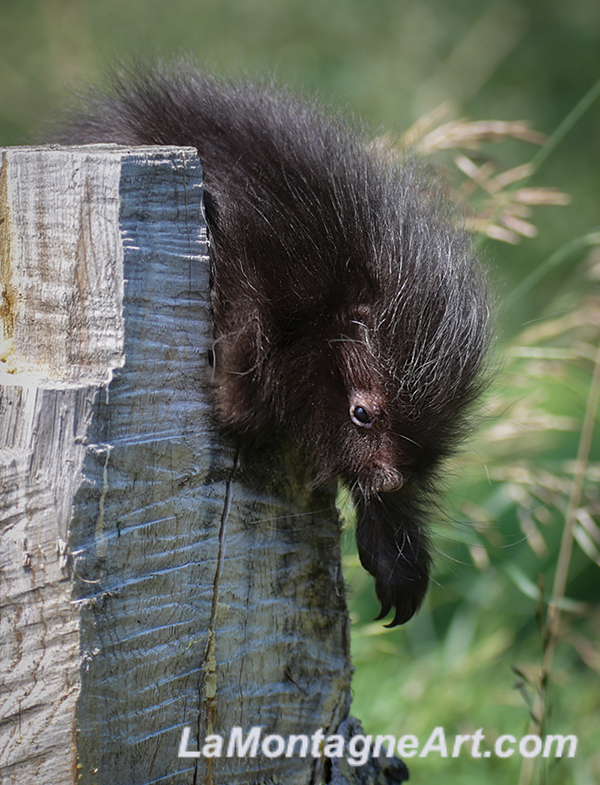 We took him out to the grass for a bit, and I got some lovely photos. A few of them are downright comical and will make wonderful painting reference. I mentioned I have long wanted to paint a porcupine but have never gotten the proper reference.
We took him out to the grass for a bit, and I got some lovely photos. A few of them are downright comical and will make wonderful painting reference. I mentioned I have long wanted to paint a porcupine but have never gotten the proper reference. After I watched them feed Velcro, Serena told me to go with Belinda in the golf cart and to bring my camera. She wouldn’t tell me where I was going, but after collecting fresh branches from a treed area on the property, we delivered them to Zipper, their adult porcupine. I didn’t even know they had one, likely because I’m usually hyper-focused on the bears.
After I watched them feed Velcro, Serena told me to go with Belinda in the golf cart and to bring my camera. She wouldn’t tell me where I was going, but after collecting fresh branches from a treed area on the property, we delivered them to Zipper, their adult porcupine. I didn’t even know they had one, likely because I’m usually hyper-focused on the bears.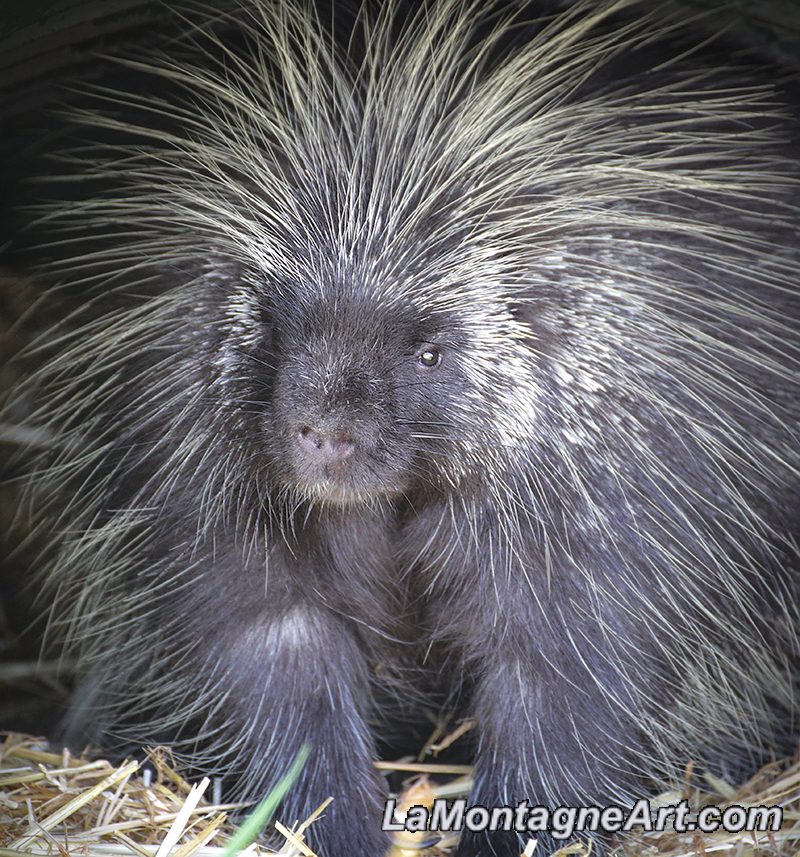 It was a hot day, and Zipper wasn’t especially active, so I don’t think I got the best reference from which to paint an adult porcupine, but at least I know where to go for some great opportunities in the future.
It was a hot day, and Zipper wasn’t especially active, so I don’t think I got the best reference from which to paint an adult porcupine, but at least I know where to go for some great opportunities in the future.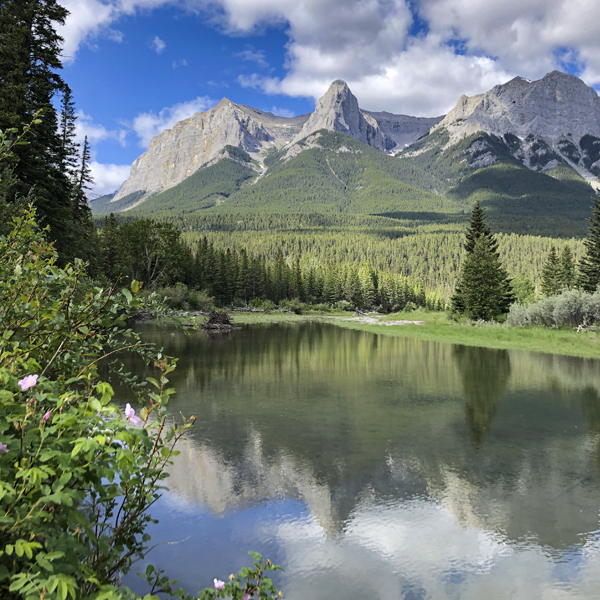
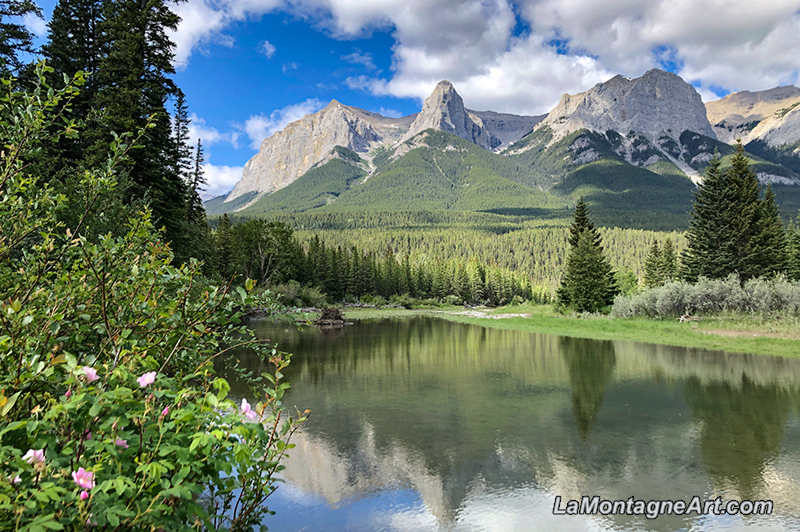 While the warm weather is here, I try to be on the bike at least once a day, which means any excuse for an errand is welcome. One loaf of bread? Sure, I’ll pick that up, but I’ll take the long route and turn it into an hour ride. Even though we’ve had our e-bikes for about a year now, I turn off the pedal assist most of the time to get some daily exercise, which turns it into a regular, but heavier, fat bike. But the assist/throttle is handy when starting from a traffic light or biking up a steep hill with groceries on board.
While the warm weather is here, I try to be on the bike at least once a day, which means any excuse for an errand is welcome. One loaf of bread? Sure, I’ll pick that up, but I’ll take the long route and turn it into an hour ride. Even though we’ve had our e-bikes for about a year now, I turn off the pedal assist most of the time to get some daily exercise, which turns it into a regular, but heavier, fat bike. But the assist/throttle is handy when starting from a traffic light or biking up a steep hill with groceries on board. While I can’t usually drop everything to go downtown to the gallery, I was already out and about and only a few minutes away, so she was pleased when I offered to meet them there. I showed them the canvases and available prints, explained a bit about the work and was happy to answer their questions about digital painting.
While I can’t usually drop everything to go downtown to the gallery, I was already out and about and only a few minutes away, so she was pleased when I offered to meet them there. I showed them the canvases and available prints, explained a bit about the work and was happy to answer their questions about digital painting.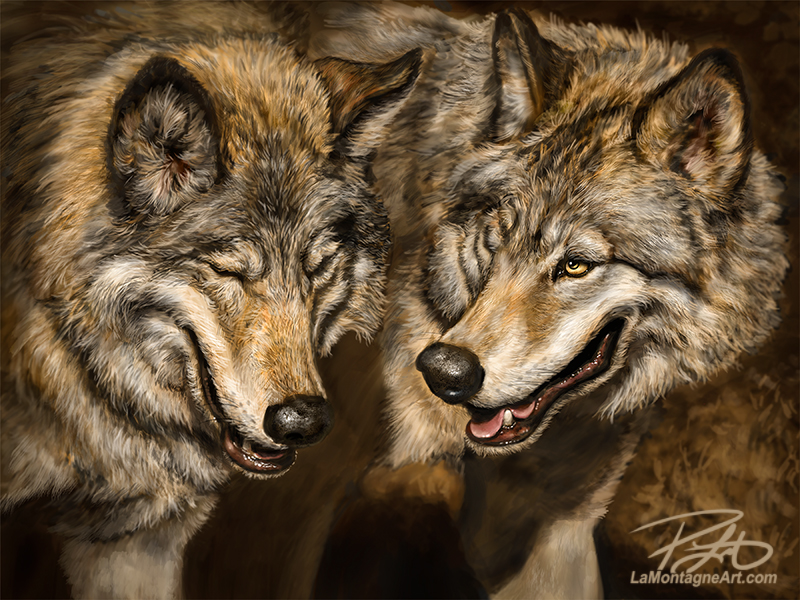 They left with another print of my Two Wolves painting (now on reorder) and four of
They left with another print of my Two Wolves painting (now on reorder) and four of 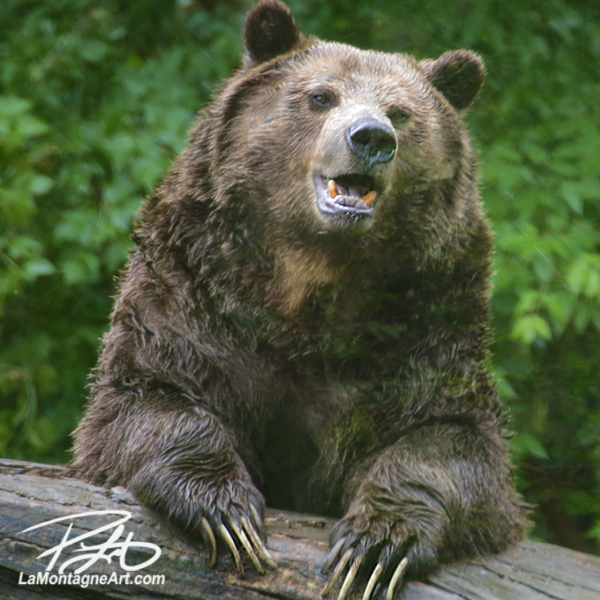
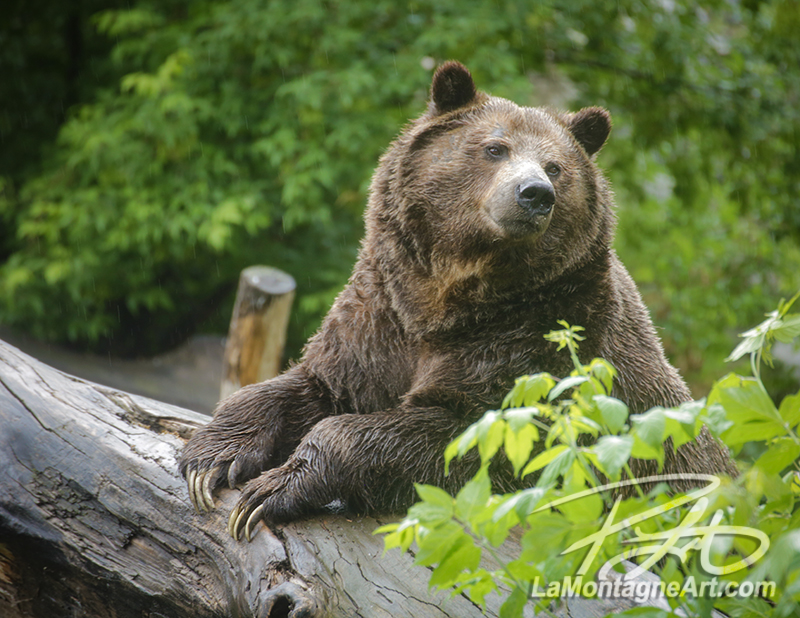 On Wednesday, I delivered a large print order to the Calgary Zoo. A zookeeper friend had ordered a couple of canvases, so I was also happy to deliver those to her.
On Wednesday, I delivered a large print order to the Calgary Zoo. A zookeeper friend had ordered a couple of canvases, so I was also happy to deliver those to her. People leave food out while camping which attracts wildlife. When a bear associates people with food, it’s game over for the bear. I’ve lived in this valley for almost thirty years, and I don’t want to count how many times I’ve read about bears who’ve been euthanized because of selfish and careless people.
People leave food out while camping which attracts wildlife. When a bear associates people with food, it’s game over for the bear. I’ve lived in this valley for almost thirty years, and I don’t want to count how many times I’ve read about bears who’ve been euthanized because of selfish and careless people.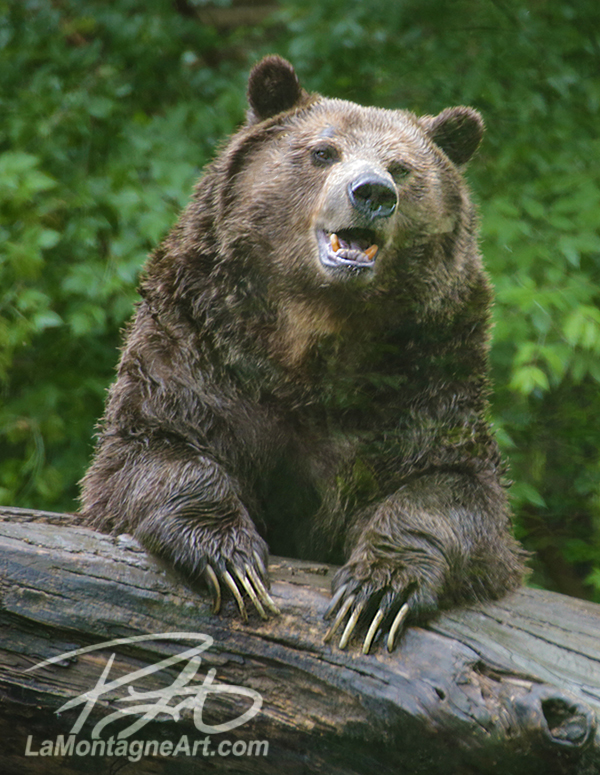 The more people repeat Skoki’s story, the more they educate young people to want to protect them in the wild and prevent them from being put in a zoo or destroyed.
The more people repeat Skoki’s story, the more they educate young people to want to protect them in the wild and prevent them from being put in a zoo or destroyed.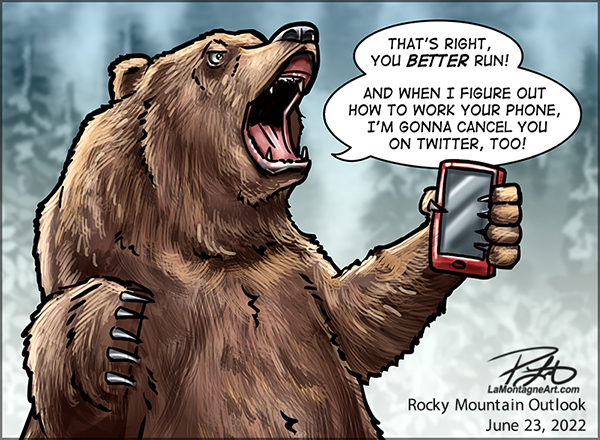 I must have taken about 700+ shots of Skoki on Wednesday. He gave me so many beautiful poses. At one point, he walked across a log, sat up and straddled it, then hung out there. The wind came up, and he was sniffing the air, clearly enjoying the rain, and I ended up with many great references. Look at those little feet.
I must have taken about 700+ shots of Skoki on Wednesday. He gave me so many beautiful poses. At one point, he walked across a log, sat up and straddled it, then hung out there. The wind came up, and he was sniffing the air, clearly enjoying the rain, and I ended up with many great references. Look at those little feet.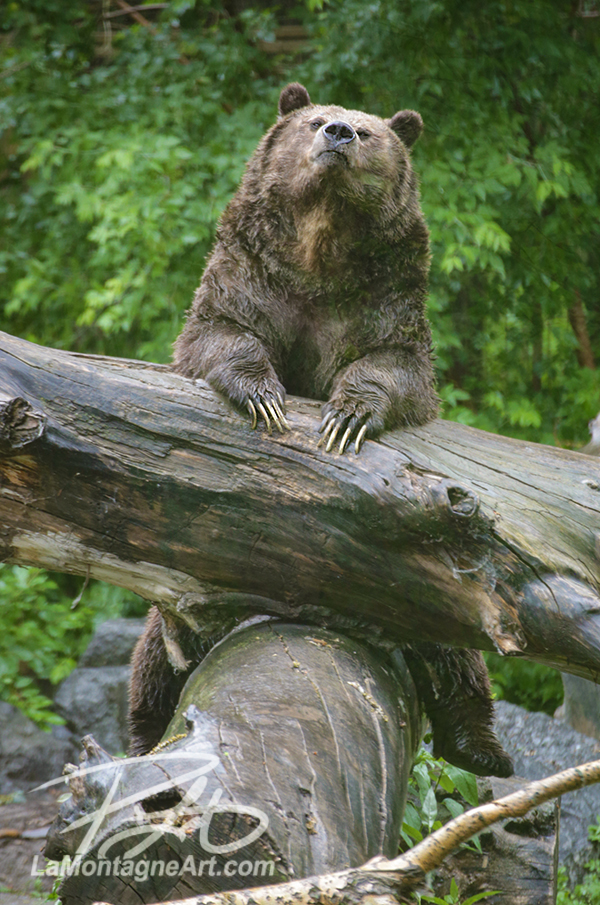 He gave me a great idea for a painting. I imagine several bears lined up at a log, like a bunch of friends hanging out at a bar. With his multiple poses and expressions in the same spot, I can paint five or six different bears using him as the reference. I’ll paint the faces and bodies differently for variety, making one thinner, another heavier, taller, and shorter; there are plenty of options. By varying the colours, the finished bears will look like their own characters, but the primary reference will still be one bear.
He gave me a great idea for a painting. I imagine several bears lined up at a log, like a bunch of friends hanging out at a bar. With his multiple poses and expressions in the same spot, I can paint five or six different bears using him as the reference. I’ll paint the faces and bodies differently for variety, making one thinner, another heavier, taller, and shorter; there are plenty of options. By varying the colours, the finished bears will look like their own characters, but the primary reference will still be one bear.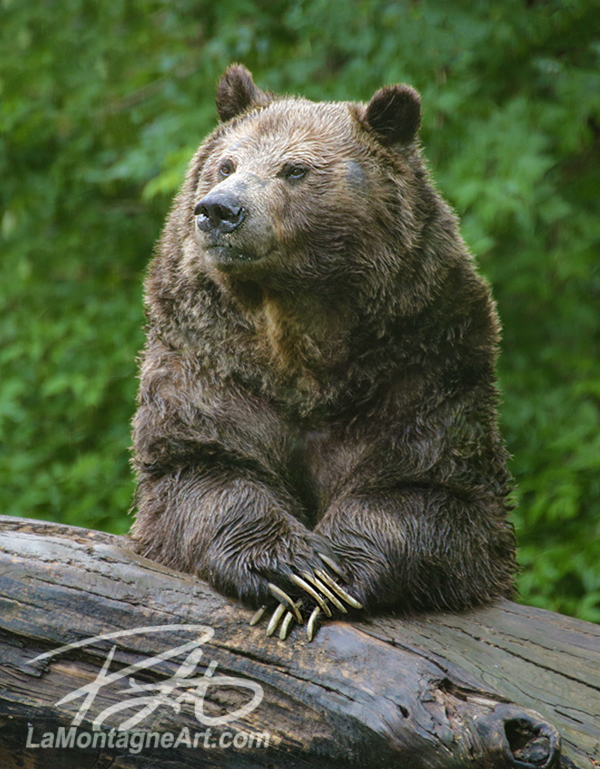 Resuming my walk back to my car about an hour and a half later, it struck me funny that I began the day hoping to get photos of animals I hadn’t yet painted or only painted once but left the zoo with a camera card full of grizzly bear photos. I have more pictures of bears than any other animal.
Resuming my walk back to my car about an hour and a half later, it struck me funny that I began the day hoping to get photos of animals I hadn’t yet painted or only painted once but left the zoo with a camera card full of grizzly bear photos. I have more pictures of bears than any other animal.

 While labour-intensive, this painting wasn’t especially difficult. There weren’t any parts of it where I worried I might not have the necessary skills. That comes from experience, the feeling that “it’ll take a while, but I got this.”
While labour-intensive, this painting wasn’t especially difficult. There weren’t any parts of it where I worried I might not have the necessary skills. That comes from experience, the feeling that “it’ll take a while, but I got this.” I began the project with several sketches and refined those into this mockup.
I began the project with several sketches and refined those into this mockup. Then I painted the individual giraffes, creating three expressions different enough to be their own characters, but I still had to match the colours, light and shadow so they belonged together in the scene. Each giraffe could have been a single painting.
Then I painted the individual giraffes, creating three expressions different enough to be their own characters, but I still had to match the colours, light and shadow so they belonged together in the scene. Each giraffe could have been a single painting. Painting the environment was the most challenging part. I could have gone with generic-looking green deciduous leaves, and most people wouldn’t have cared. Even though my style of art is whimsical, and I take liberties with exaggeration and expression, I still try for accuracy in the anatomy and environment.
Painting the environment was the most challenging part. I could have gone with generic-looking green deciduous leaves, and most people wouldn’t have cared. Even though my style of art is whimsical, and I take liberties with exaggeration and expression, I still try for accuracy in the anatomy and environment.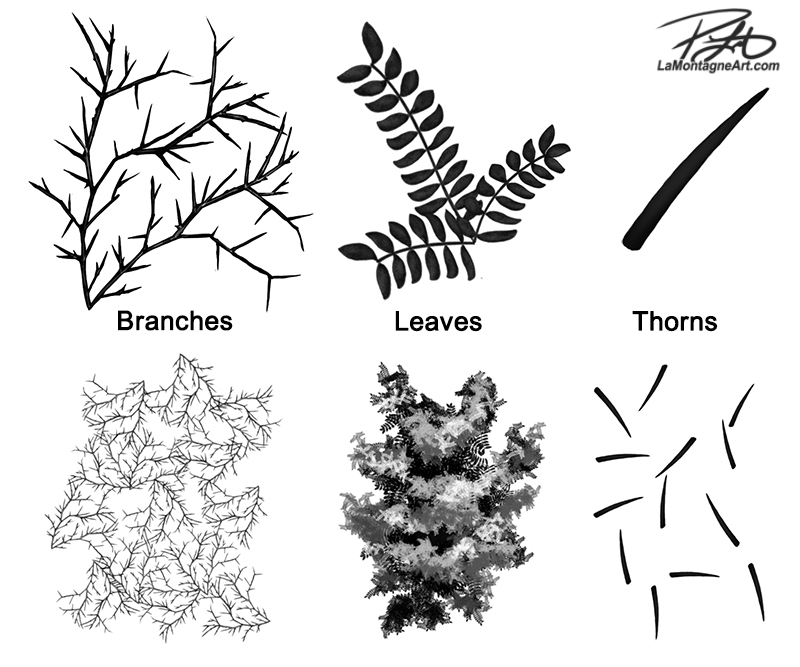 I don’t use any colour dynamics in my brushes. I prefer to pick and choose colour while painting, sampling from adjacent colours to get a better blend.
I don’t use any colour dynamics in my brushes. I prefer to pick and choose colour while painting, sampling from adjacent colours to get a better blend. These new brushes allowed me to create a solid foundation, but it looked flat and lifeless until I spent several hours painting light, shadow, and detail to achieve the finished result.
These new brushes allowed me to create a solid foundation, but it looked flat and lifeless until I spent several hours painting light, shadow, and detail to achieve the finished result.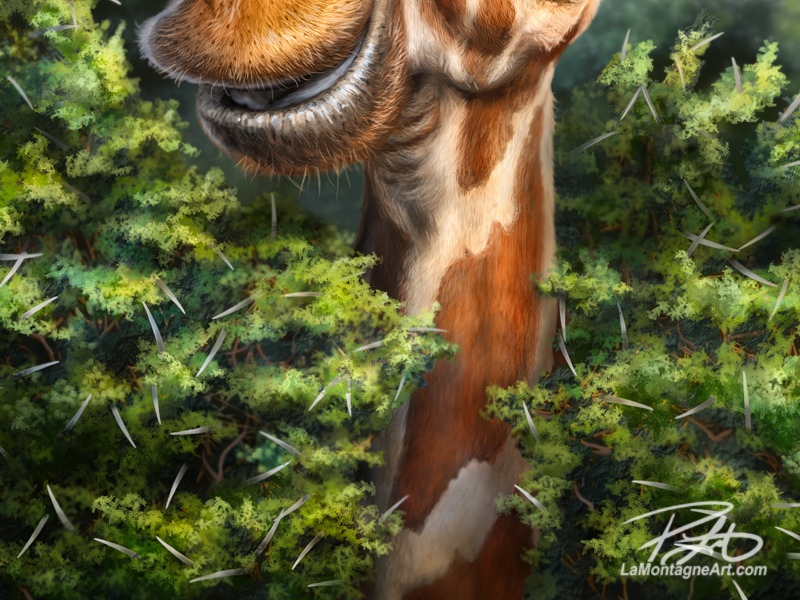 New digital artists often get obsessed with buying brush packs, thinking that’s all they need to achieve the same look as more experienced artists. But professional tools won’t provide a shortcut past the years of work it takes to become good at anything.
New digital artists often get obsessed with buying brush packs, thinking that’s all they need to achieve the same look as more experienced artists. But professional tools won’t provide a shortcut past the years of work it takes to become good at anything.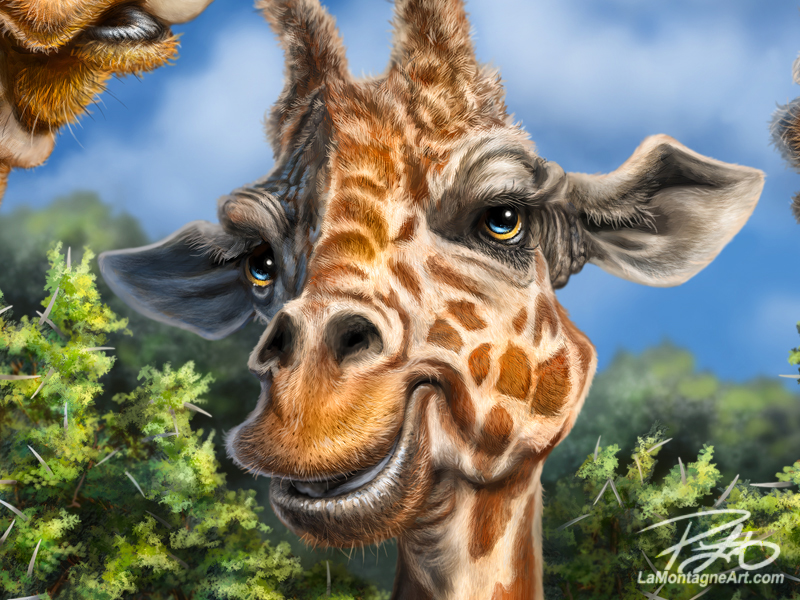 While I called it Long Neck Buds, someone could easily interpret them as two parents and a child. People often tell me what one of my paintings is ‘thinking’ or what their expression means, and I wouldn’t dream of contradicting them. If the art makes them feel something or triggers their imagination, that’s good enough for me.
While I called it Long Neck Buds, someone could easily interpret them as two parents and a child. People often tell me what one of my paintings is ‘thinking’ or what their expression means, and I wouldn’t dream of contradicting them. If the art makes them feel something or triggers their imagination, that’s good enough for me.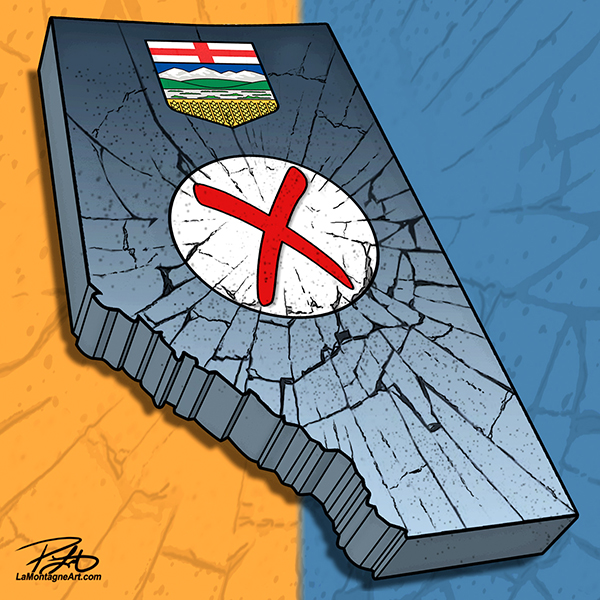
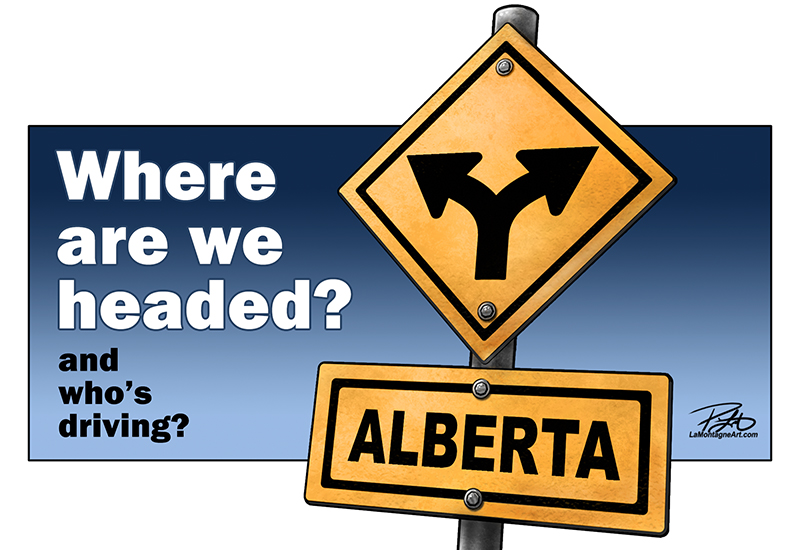
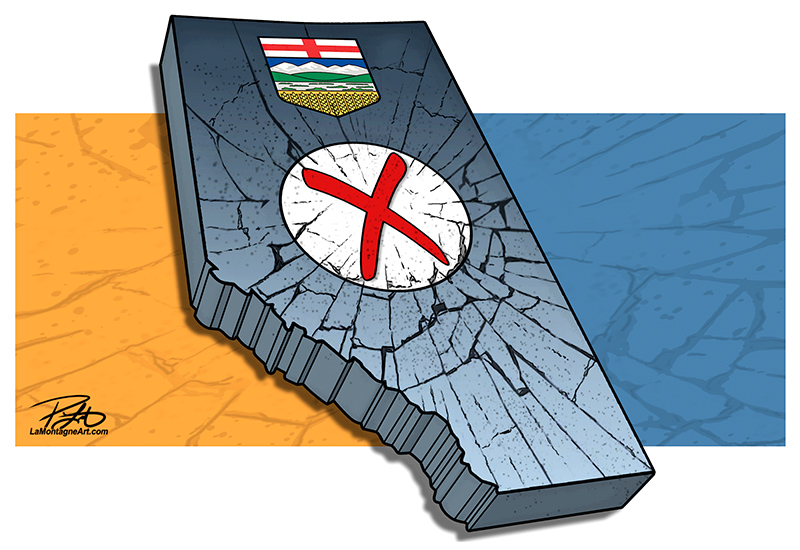 I could have written this before election day to encourage people to get out and make a difference, but to imagine I have that much influence over anyone would be arrogant.
I could have written this before election day to encourage people to get out and make a difference, but to imagine I have that much influence over anyone would be arrogant.
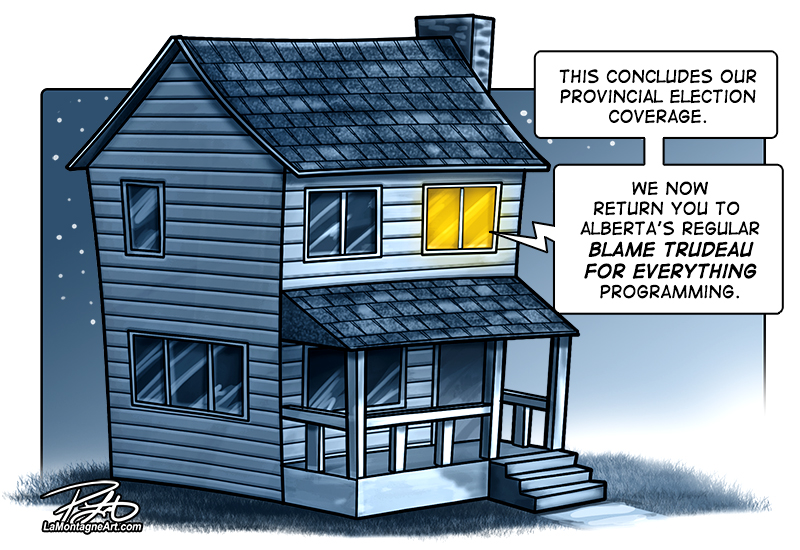 ____
____
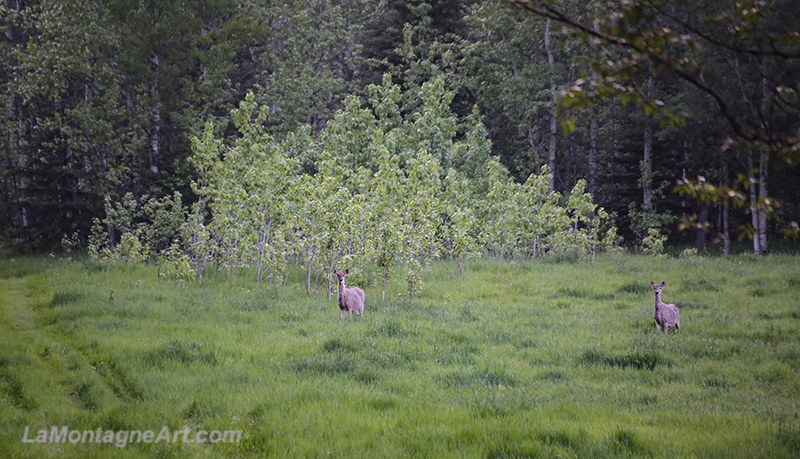 It’s a half section of land with lush green forest, pastures, a creek and lots of room to wander. There are plenty of birds, deer and coyotes. Every once in a while, you might spot a moose, beaver or a bear, and on one trip last fall, my buddy Darrel woke to a cougar walking right beside the deck.
It’s a half section of land with lush green forest, pastures, a creek and lots of room to wander. There are plenty of birds, deer and coyotes. Every once in a while, you might spot a moose, beaver or a bear, and on one trip last fall, my buddy Darrel woke to a cougar walking right beside the deck.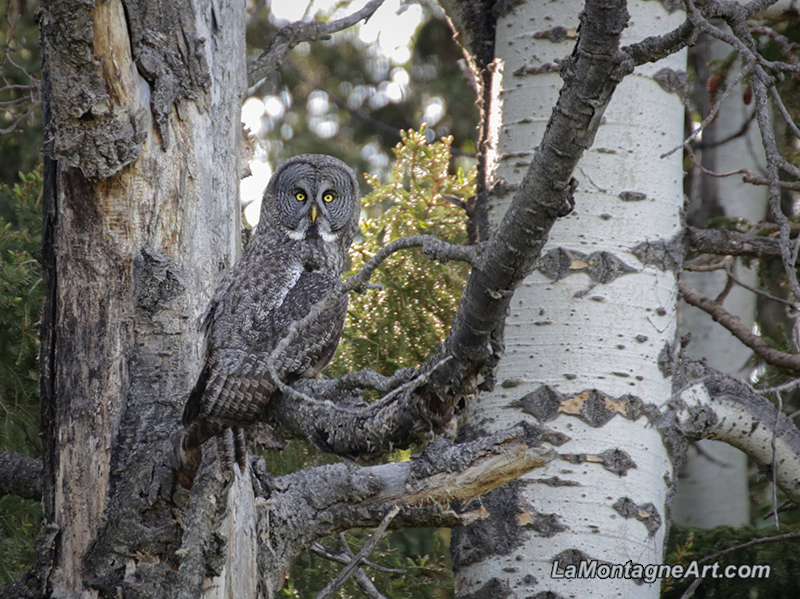 This past Saturday, however, I was delighted to see another great grey owl. This one wasn’t as enthused by my intrusion, but I still got some shots before it flew off into the trees. It wasn’t until I returned to the cabin and loaded the card onto my iPad that I realized the shots were much better than I had thought. Since they were all handheld at 300mm, I was surprised I got any that were even in focus, or close to focus, anyway.
This past Saturday, however, I was delighted to see another great grey owl. This one wasn’t as enthused by my intrusion, but I still got some shots before it flew off into the trees. It wasn’t until I returned to the cabin and loaded the card onto my iPad that I realized the shots were much better than I had thought. Since they were all handheld at 300mm, I was surprised I got any that were even in focus, or close to focus, anyway.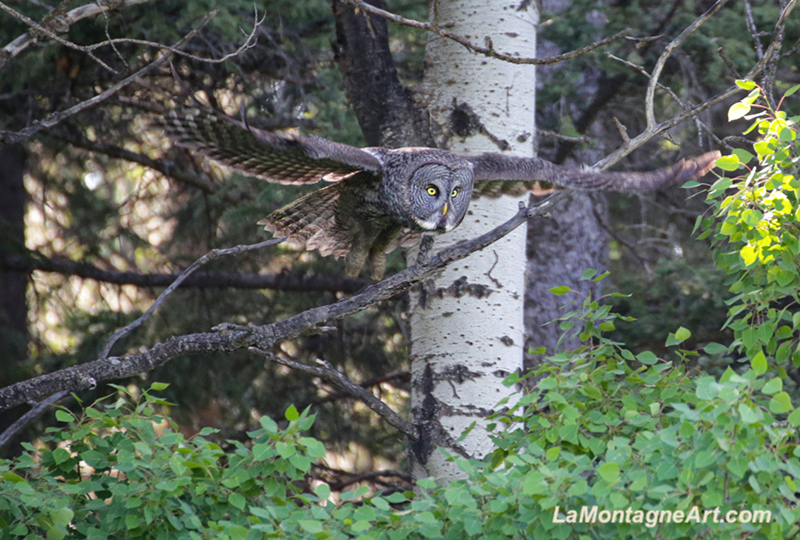 The great thing about taking photos for painting reference is that if they’re a little out of focus or the lighting isn’t ideal, I’ll still keep plenty of shots a professional photographer would throw away. What’s not worth printing to them, could be a perfect reference shot for me.
The great thing about taking photos for painting reference is that if they’re a little out of focus or the lighting isn’t ideal, I’ll still keep plenty of shots a professional photographer would throw away. What’s not worth printing to them, could be a perfect reference shot for me. The couple we rent from have become friends over the last five years, so they’ll often join us for a couple of drinks in the evenings. I mentioned that it bothers me that I’m nervous around horses. I want to be more comfortable with them, as I know they’re able to sense it when a person is uneasy.
The couple we rent from have become friends over the last five years, so they’ll often join us for a couple of drinks in the evenings. I mentioned that it bothers me that I’m nervous around horses. I want to be more comfortable with them, as I know they’re able to sense it when a person is uneasy.
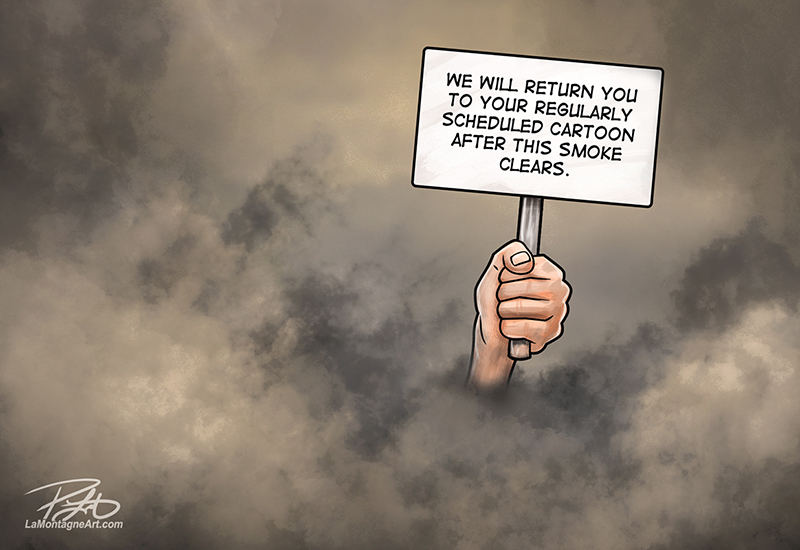
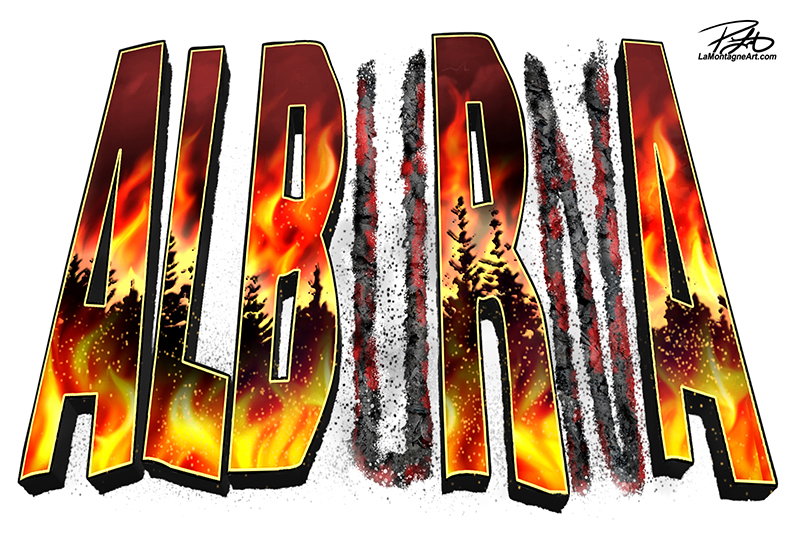
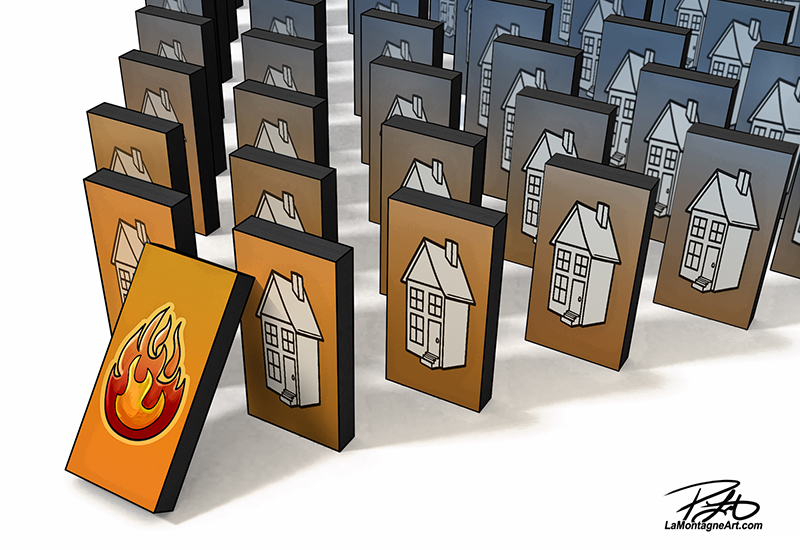 Even with that small level of experience, I can’t imagine the stress these recent fire evacuees are enduring. Two weeks out of your home, watching the fires on the news as they get closer, often from hours away in shelters or homes in unfamiliar communities, not knowing when or if you’ll be able to return.
Even with that small level of experience, I can’t imagine the stress these recent fire evacuees are enduring. Two weeks out of your home, watching the fires on the news as they get closer, often from hours away in shelters or homes in unfamiliar communities, not knowing when or if you’ll be able to return.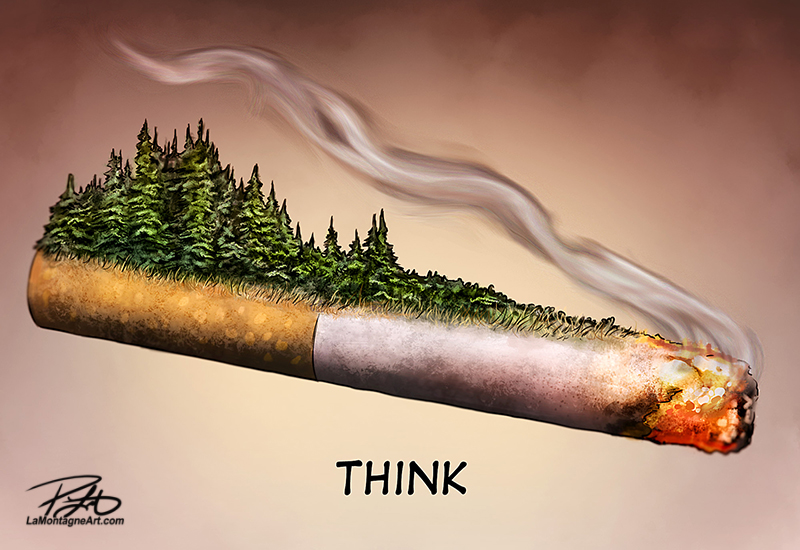 Wildfires are destructive enough. But what bothers me most is how so many use these disasters to further their agendas, political or otherwise.
Wildfires are destructive enough. But what bothers me most is how so many use these disasters to further their agendas, political or otherwise. Some supporters of BOTH political parties accuse the other of deliberately starting these fires to win votes. People in the energy sector are accusing environmentalists of starting fires to destroy the oil patch. Climate change activists use the fires to trumpet their agendas, and deniers share cherry-picked links to debunk them.
Some supporters of BOTH political parties accuse the other of deliberately starting these fires to win votes. People in the energy sector are accusing environmentalists of starting fires to destroy the oil patch. Climate change activists use the fires to trumpet their agendas, and deniers share cherry-picked links to debunk them. Amid all this noise, people out of their homes haven’t had a good night’s sleep in weeks, they’re unable to work, their kids are out of school, and whatever problems they already had are compounded. They’re scared, vulnerable, and feeling helpless. Their world is falling apart, and they can do nothing about it.
Amid all this noise, people out of their homes haven’t had a good night’s sleep in weeks, they’re unable to work, their kids are out of school, and whatever problems they already had are compounded. They’re scared, vulnerable, and feeling helpless. Their world is falling apart, and they can do nothing about it.
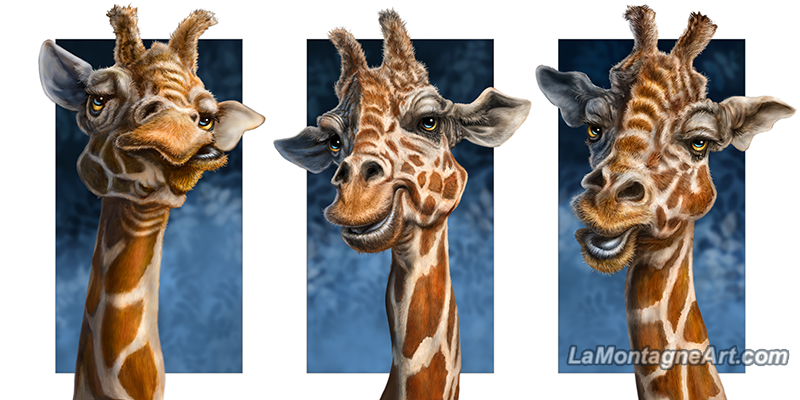
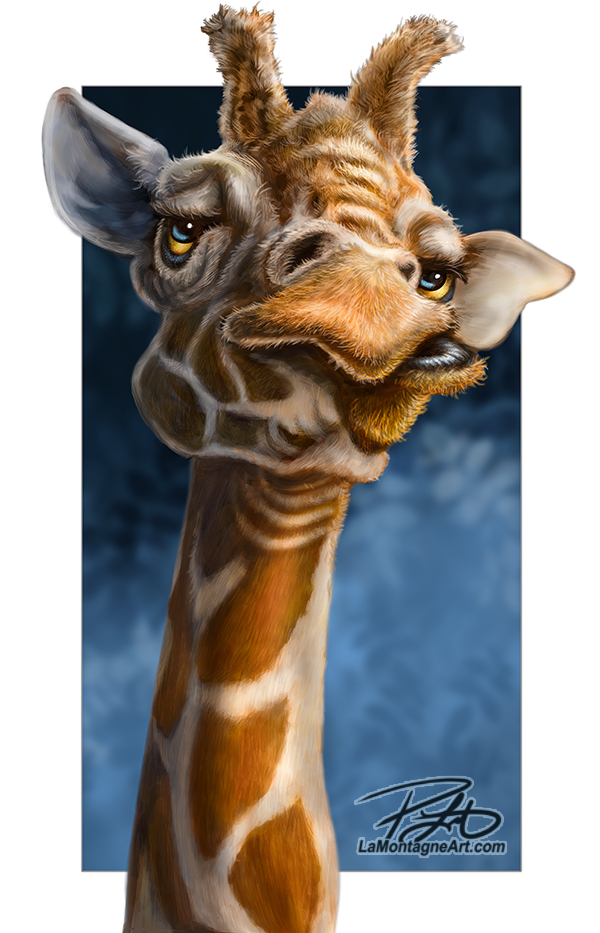
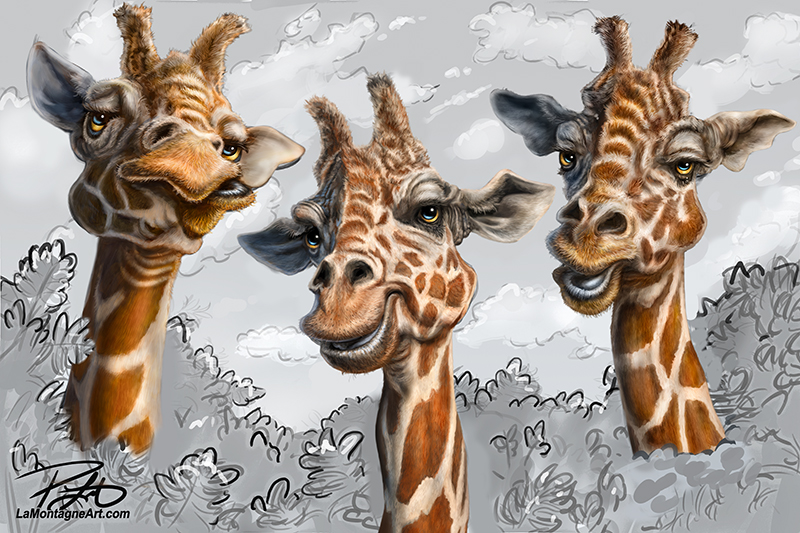 I have a few ideas on how best to do it, including creating a new brush for the task, but with no deadline, I have time to experiment.
I have a few ideas on how best to do it, including creating a new brush for the task, but with no deadline, I have time to experiment.
 It’s been a busy week of post-show inventory, filling custom orders, drawing editorial cartoons and stowing my stock and booth hardware, but that’s normal after my biggest event of the year.
It’s been a busy week of post-show inventory, filling custom orders, drawing editorial cartoons and stowing my stock and booth hardware, but that’s normal after my biggest event of the year.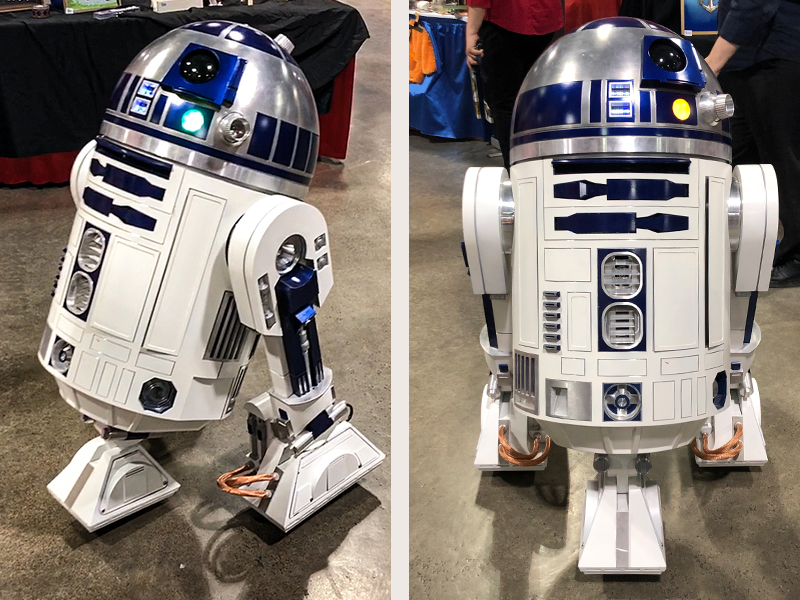 It still pushes the childhood buttons when a fully functional R2-D2 glides by my booth. With a rotating head, lights, whistles and sound effects, panels that open and close, and full mobility, it looks and behaves like the real thing. I even know the guy who manufactured it; I used to work for him years ago in Canmore. So I know he’s running it by remote control from about ten feet away, that it’s all mechanical gears, parts, and wires. But the illusion that it’s the beloved movie character is strong.
It still pushes the childhood buttons when a fully functional R2-D2 glides by my booth. With a rotating head, lights, whistles and sound effects, panels that open and close, and full mobility, it looks and behaves like the real thing. I even know the guy who manufactured it; I used to work for him years ago in Canmore. So I know he’s running it by remote control from about ten feet away, that it’s all mechanical gears, parts, and wires. But the illusion that it’s the beloved movie character is strong.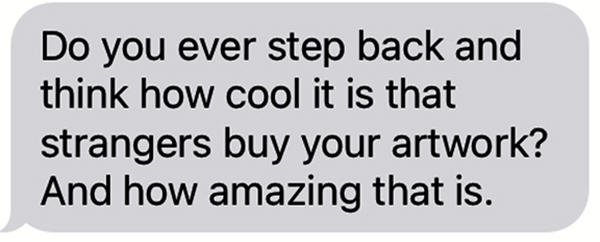
 Several folks stopped by to tell me that their friend or family member couldn’t make it to Expo this year, but they wanted them to say Hello for them.
Several folks stopped by to tell me that their friend or family member couldn’t make it to Expo this year, but they wanted them to say Hello for them.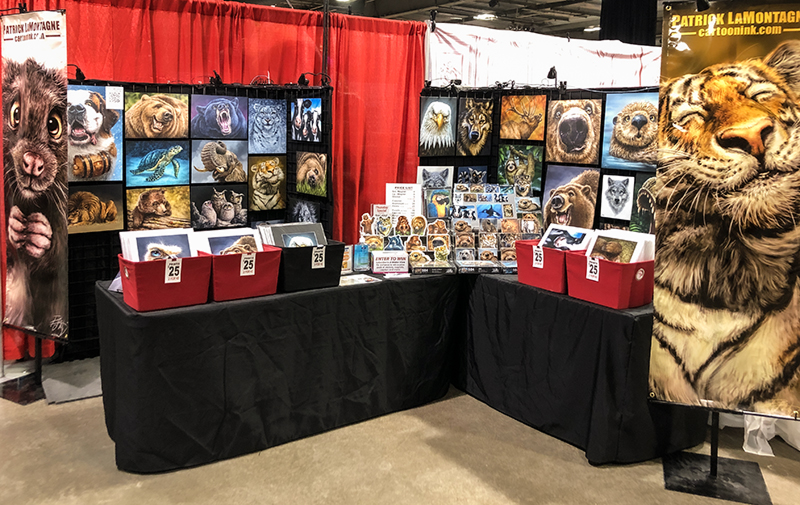 People walk by the booth, their eyes scan the art walls, and they smile. Then they nudge whoever they’re with and point, and the smile infects that person, too. I’ve talked about this before, but it’s like a drug. I can’t get enough of it.
People walk by the booth, their eyes scan the art walls, and they smile. Then they nudge whoever they’re with and point, and the smile infects that person, too. I’ve talked about this before, but it’s like a drug. I can’t get enough of it. And, of course, it wouldn’t be Expo without a well-meaning follower reminding me that I am long overdue on my promise of a book. Imposter syndrome, perfectionism, I don’t know what my problem is there. My failure to launch bothers me more than anybody else. But the push is well deserved, Kim! Thank you for that.
And, of course, it wouldn’t be Expo without a well-meaning follower reminding me that I am long overdue on my promise of a book. Imposter syndrome, perfectionism, I don’t know what my problem is there. My failure to launch bothers me more than anybody else. But the push is well deserved, Kim! Thank you for that.